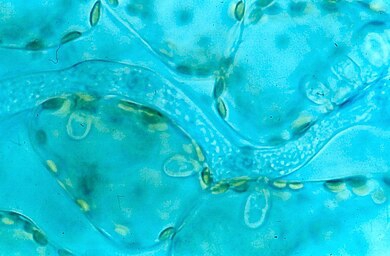- HOME >
- NEWS >
- Cultivation 20-11-2023
Plant protects offspring through the soil

Plants infected with a water fungus influence the bacteria in the soil such that they in turn protect the next generation of plants from the same pathogen. Remarkably, the suppression of the disease by the bacteria seems to take place precisely on the plant's stem and leaves. This is what researchers from Utrecht University write in the scientific journal Nature Microbiology. The new knowledge offers the prospect of less dependence on plant protection products
The researchers infected the laboratory plant sand rocket with the water mould downy mildew. The plant then secretes substances to attract a very specific set of probiotics. The Utrecht study showed that the composition of bacteria on the plant's stem and leaves also changes after infection with downy mildew. On the above-ground parts, they found a huge increase in very specific bacteria that protect the plant from the pathogen.
For verification
To check whether the results apply generally to sand rockets infected with downy mildew, the Utrecht researchers compared their composition of protective bacteria with those from laboratories abroad. Exactly the same bacterial sub-communities were found on plants from laboratories in Germany and England .
Plants recruit the bacteria from the soil, after which the bacteria increase on the leaves and suppress the disease. By recruiting the bacteria, the plant can also eventually safeguard the health of subsequent generations. When the plant dies, the stem bacteria remain in the soil. A new generation of plants benefits directly by allowing the good bacteria to settle on the stem and leaves of the young plant.
Good hope
The Utrecht scientists are hopeful that their new results will be useful in agriculture in the future. They think that crops can be bred in such a way that they can create their own disease-resistant soil The new knowledge may be able to contribute to developments to make crops less dependent on pesticides.
More information can be found in the publication "Obligate biotroph downy mildew consistently induces near-identical protective microbomes in Arabidopsis thaliana" scientific journal Nature Microbiology.
Source: Utrecht University, 16/11/2023/ AgriHolland BV